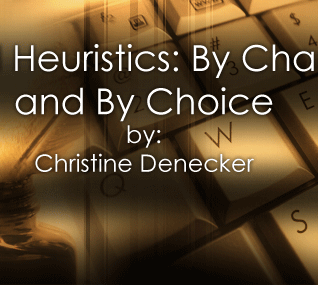


"Working in the lab helped me clarify my thesis and audience." In terms of metacognitive “gain”, the heuristic required students to consider how invention work differed in its traditional and electronic forms as well as how they might transition from their digital literacy explanation to their alphabetic literacy assignment. Kathleen B. Yancey’s (2004)discussion of composing in PowerPoint and then in written text underscores this argument: “As they [students] move from medium, they consider what they move forward, what they leave out, what they add . . .” (p. 314). During the screening of our digital literacy montages, students discussed how the choices they made digitally differed or shared similarities with choices made on the same topic in a more traditional text. At this point, students unearthed some limitations to the digital as heuristic, especially regarding the alphabetic restraints they had given. They agreed that they could effectively convey their “literacy” with visuals, music, and minimal text; however, they also noted points where additional written or verbal information would enhance the “reading” of the piece. Although unaware of multimodal composition theory, students were coming to know what Gunther Kress and Theo van Leeuwen have asserted: “Not everything that can be realized in language can also be realized by means of images, or vice versa” (1996, p. 19), as well as what Yancey has stated: “ . . . you can only invent inside what an arrangement permits—and different media permit different arrangements” (2004, p. 317). Students also (unknowingly) shared a conclusion with Catherine F. Smith (1994) who notes that a heuristic’s limitations should not dissuade one from using it. (For in-depth student comments, see “Results” portion of this article). This metacognitive approach to incorporating the digital heuristic led to some thoughtful and critical classroom discussions; hence the third step on the pedagogical scaffold: critical thinking. Mickey Hess (2007), in Composing Multimodal Assignments, argues multimodal assignments “expand students’ thinking about composing and how this complex set of processes works” (p. 29). Cope and Kalantizis (2000), too, argue that “When learners juxtapose different languages, discourses, styles, and approaches, the gain substantively in metacognitive and metalinguistic abilities and in their ability to reflect critically on complex systems and their interactions” (p. 15). Daniel T. Willingham (2007) notes as well that “there are metacognitive strategies that, once learned, make critical thinking more likely” (p.17). What this all means is that adding a pedagogical layer of “thinking about thinking” to the heuristic process prompted students to think beyond the subject (literacy) of the digital text they were composing to the actual process of composing itself. And in doing so, perhaps they were gaining a better, more critical understanding of the composing process as a whole: whether it takes place in a digital or traditional medium. In order that I might better gauge students’ levels of critical thought, I had them compose written reflections following the literacy montage activity and class discussion. Reflection is a staple of process writing, since, as Hess notes, it “encourages critical thinking and deepens the learning . . .” (2007, p.31). Odell and Katz (2006) call this “Taking Stock of Where You Are”; the reflections revealed just that, as they reiterated and expanded points broached in the full class discussion. (See additional student comments in "Results"). Specifically, one student noted:
|